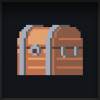Bitcoin Reborn: The Awakening of the BRC2.0 Empire

On March 31, 2025, BRC2.0 officially launched on Bitcoin Signet. This upgrade introduces EVM functionality to BRC20, granting all BRC20 tokens programmability. It signals a new wave of innovation for Bitcoin-native assets and marks the beginning of a new era for the Bitcoin ecosystem.
In 2023, Bitcoin’s ecosystem underwent an unexpected transformation—the birth of BRC20. This experimental token standard, built atop the Ordinals protocol, introduced fungible tokens to Bitcoin for the first time, akin to Ethereum’s ERC20, sparking a wave of meme coin mania.
BRC20 originated in March 2023 when a developer named Domo (@domodata) had a sudden idea: If the Ordinals protocol could inscribe NFTs onto Bitcoin sats, why not tokens? Using JSON inscriptions, he designed the BRC20 standard. The first token, $ORDI, emerged fully minted by the community, without team allocations, ensuring equal opportunity. This innovation generated significant excitement, especially as meme tokens surged in value, quickly placing BRC20 at the heart of the Bitcoin ecosystem and broader crypto market.
While BRC20 was a successful experiment, it was also controversial. It transformed Bitcoin from a simple store of value into a programmable asset layer. Miners greatly profited from inscription fees, but the hype brought network congestion and high gas costs. Many Bitcoin purists argued it deviated from Satoshi’s vision, dismissing it as mere speculation.
Nonetheless, BRC20 opened new possibilities, proving Bitcoin’s potential extended far beyond being just “digital gold.”
To this day, BRC20 has expanded significantly, with tens of thousands of tokens and a total market cap reaching billions. The $ORDI token alone surpassed $2 billion. However, technological stagnation prevented further evolution and sustainable growth, leading to a gradual decline.
Markets don't wait forever, nor do believers. Tempting opportunities outside the Bitcoin ecosystem dealt BRC20 severe blows. Projects like Pumpfun, "President" coins, "Nation" coins, and VC-backed tokens captured attention, some completing their life cycles within minutes. Retail investors found themselves repeatedly defeated by larger capital forces, resulting in shattered dreams.
Believers again rallied for the return of BRC20—the standard representing fairness. Momentarily, it felt like the king was back. However, the comeback was merely a loud noise without substance. With limited use cases confined to issuance and trading, BRC20’s momentum faded, laying the groundwork for its successor: BRC2.0.
BRC20, much like a teenager, was vibrant but troubled by growing pains. It desperately needed a major upgrade to flourish within Bitcoin’s future.
Hence, BRC2.0 arrived—not merely as an inscription savior but potentially as the entire Bitcoin ecosystem’s savior. BRC2.0 isn’t just a patch; it's a redefinition of Bitcoin's future.
By introducing smart contracts, it significantly enhances the capabilities of BRC20 tokens, transforming them from simple ledger entries into dynamic programmable assets. Specifically, BRC2.0 unlocks endless potential for Bitcoin-native assets, including decentralized finance (DeFi), tokenization of real-world assets (RWA), decentralized autonomous organizations (DAOs), stablecoins, and more.
Unlike traditional sidechains relying on multi-sig bridges or Layer-2 solutions, BRC2.0 aims to directly leverage Bitcoin’s existing infrastructure. This method increases efficiency, reduces external trust requirements, and remains consistent with Bitcoin's core principles of security and decentralization.
Additionally, users only pay native Bitcoin miner fees, with no extra charges for contract interactions. Developers using programmable modules also benefit from this straightforwardness.
BRC2.0 introduces two particularly user-friendly innovations:
- No gas fees for end-users—computation costs are handled by indexers. Users only pay standard Bitcoin miner fees required for on-chain transactions.
- All BRC20 tokens automatically become programmable, requiring no migration or user action. BRC2.0 is fully backward-compatible, making it a genuine upgrade from BRC20.
While BRC20 acted as a "ledger of inscriptions," BRC2.0 functions more as an "on-chain micro-platform." It evolves Bitcoin from static storage into a dynamic ecosystem, enabling developers to build previously impossible applications.
Currently, BRC2.0 is spearheaded by Binari (@0xBinari) and the Best in Slot team (@bestinslotxyz), in collaboration with Domo (@domodata) and Layer 1 Foundation (@L1Fxyz). Key BRC20 partners like OKX (@okx) and UniSat (@unisat_wallet) provide critical indexing support. With contributions from leading entities across Web3, BRC2.0 is poised as a beacon of hope for Bitcoin.
Nevertheless, substantial challenges remain. Technically, implementing state management and script extensions securely is complex. Additionally, Ethereum's mature DeFi ecosystem demands that BRC2.0 identifies a unique niche.
If successful, however, BRC2.0 will invigorate Bitcoin, not replacing its store-of-value role, but augmenting it with enhanced utility.
BRC20 was Bitcoin’s bold experiment; BRC2.0 is its brave vision for the future. From ledger to platform, experiment to ecosystem—this journey is uncertain but profoundly exciting.
Regardless of its ultimate form, BRC2.0 reminds us of a fundamental truth: Bitcoin innovation never stops—it is always on the road.
Make Bitcoin Magic Again!

